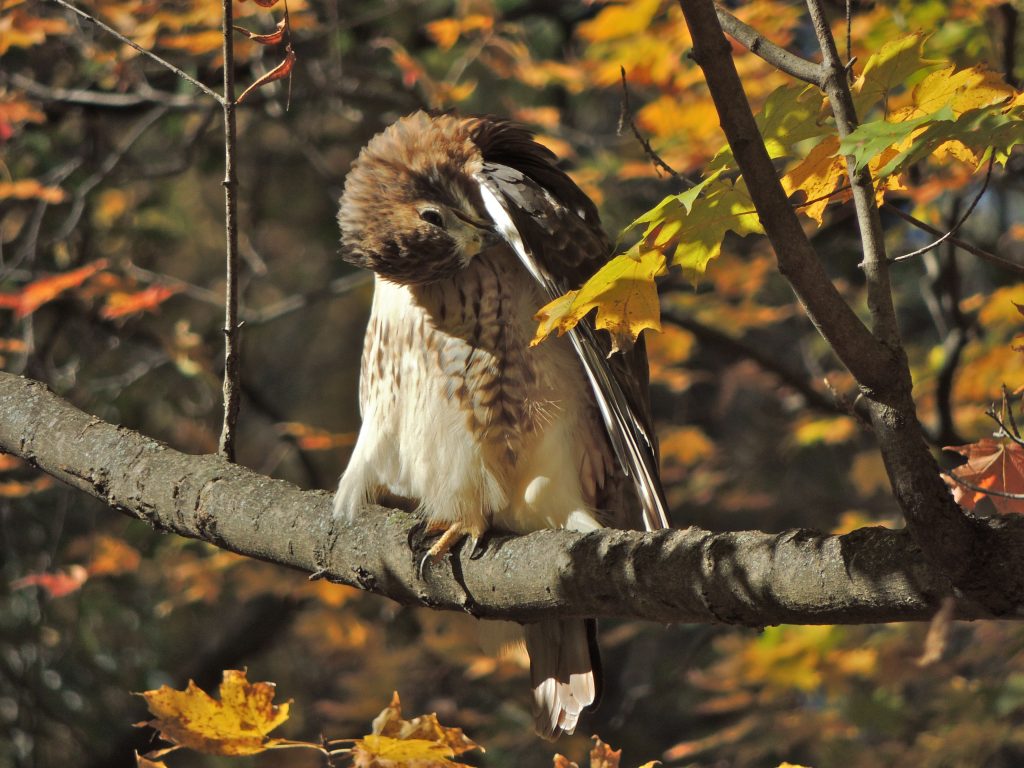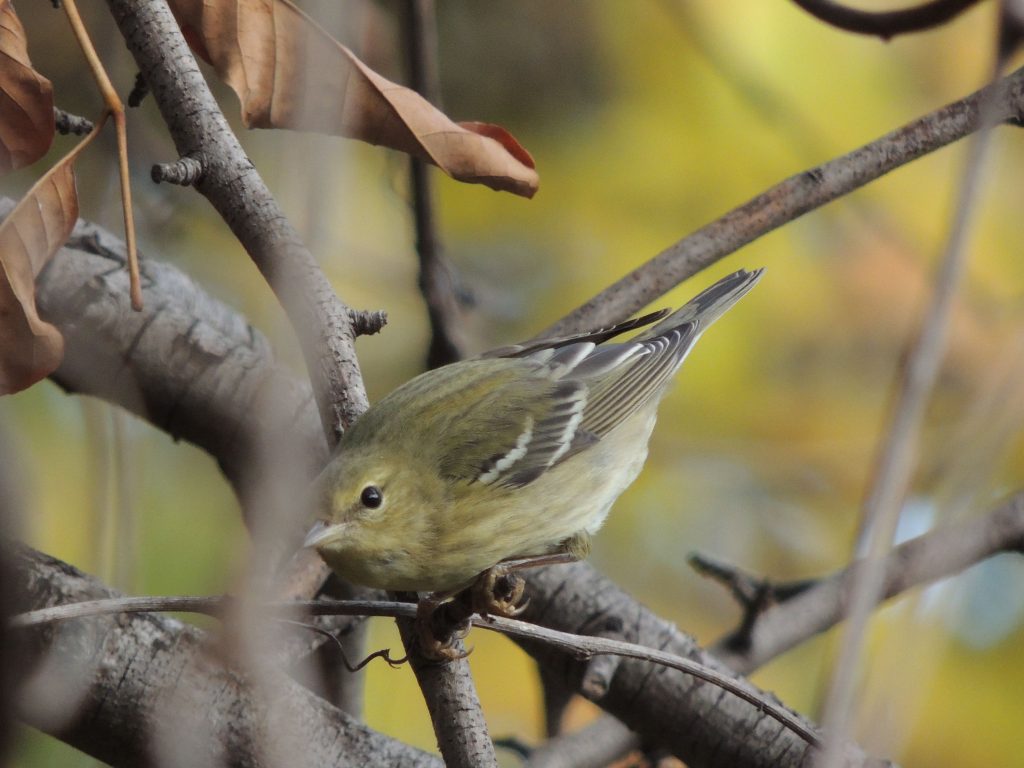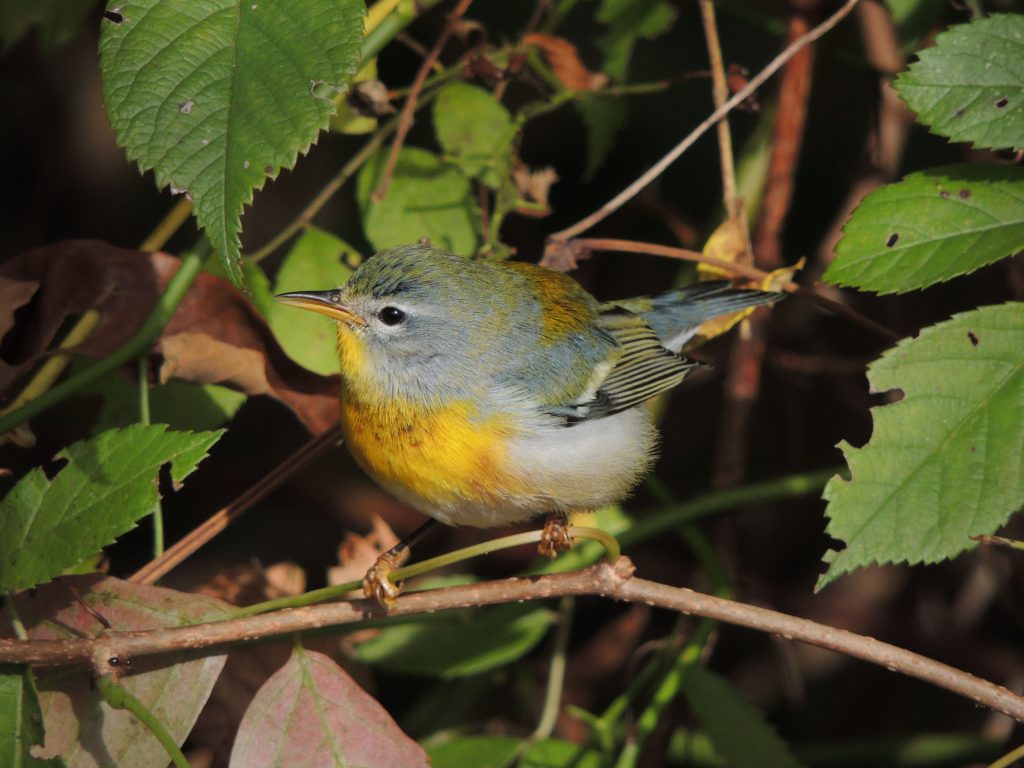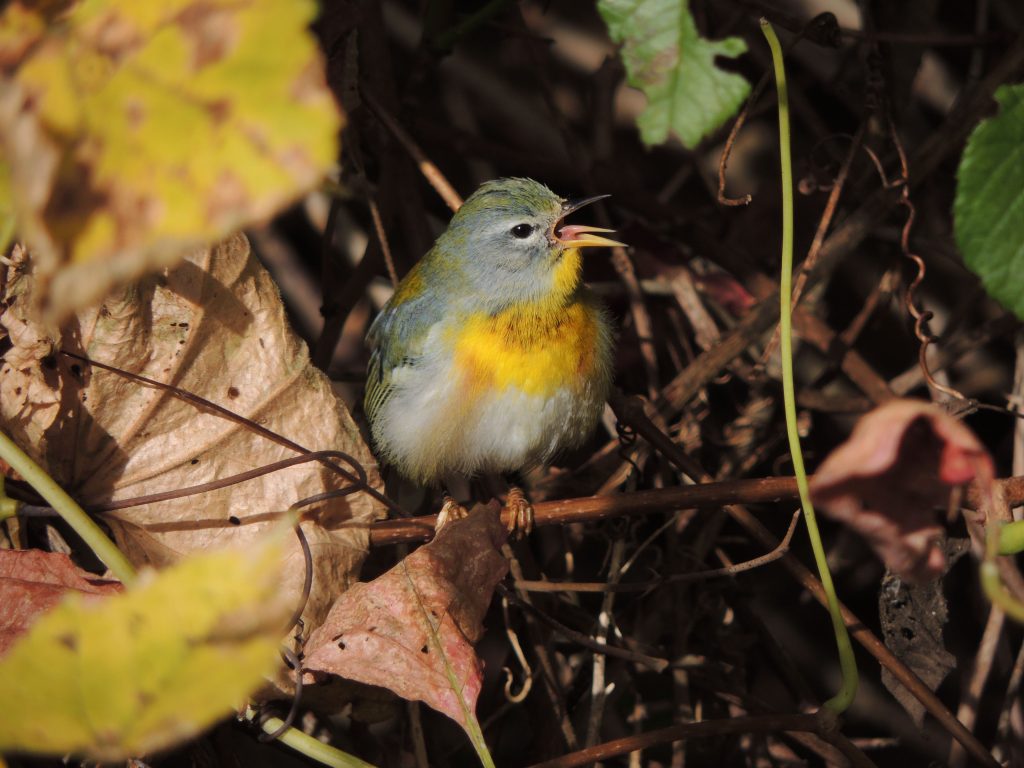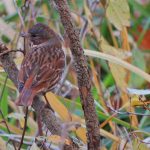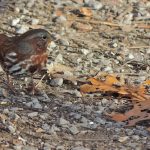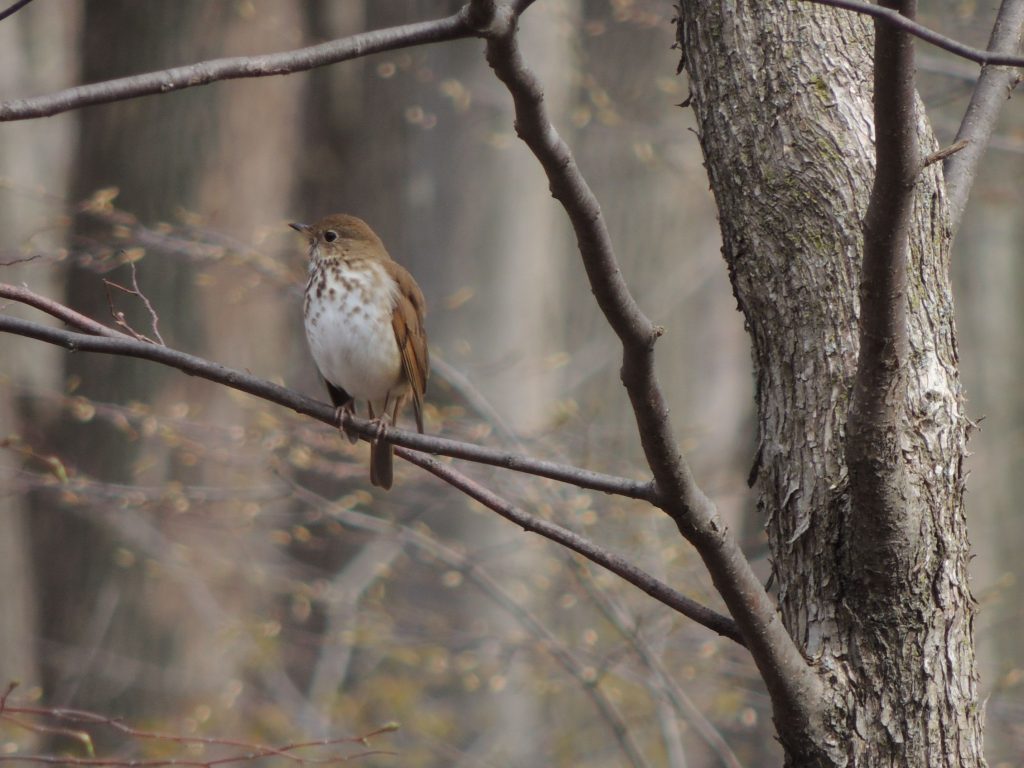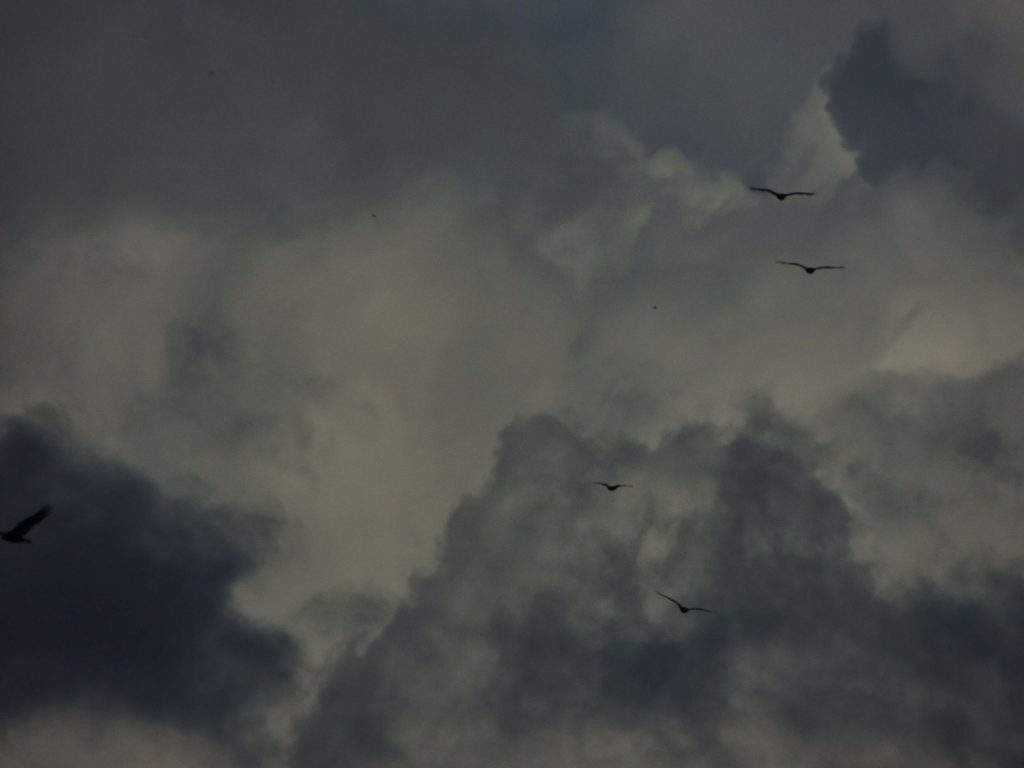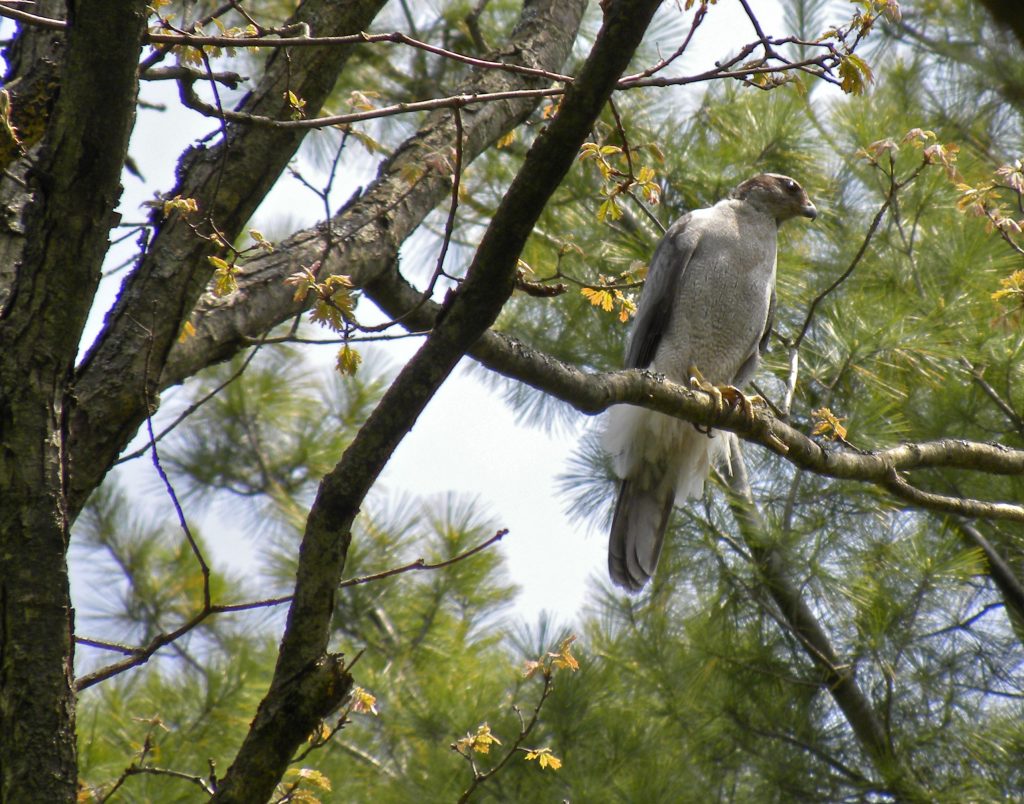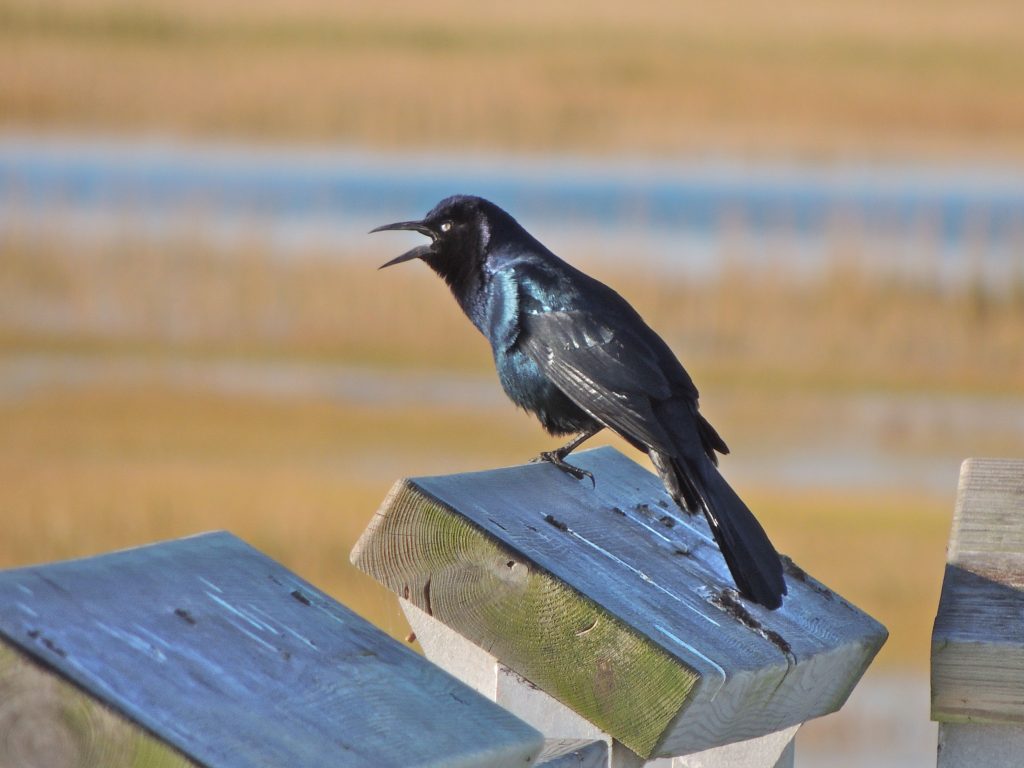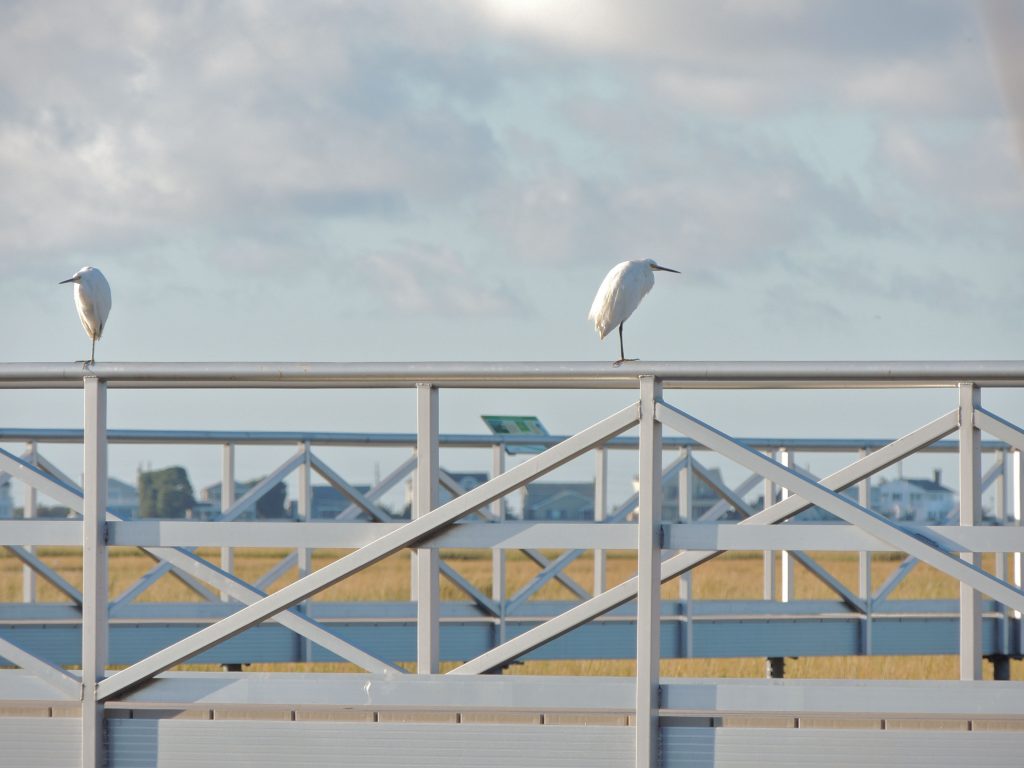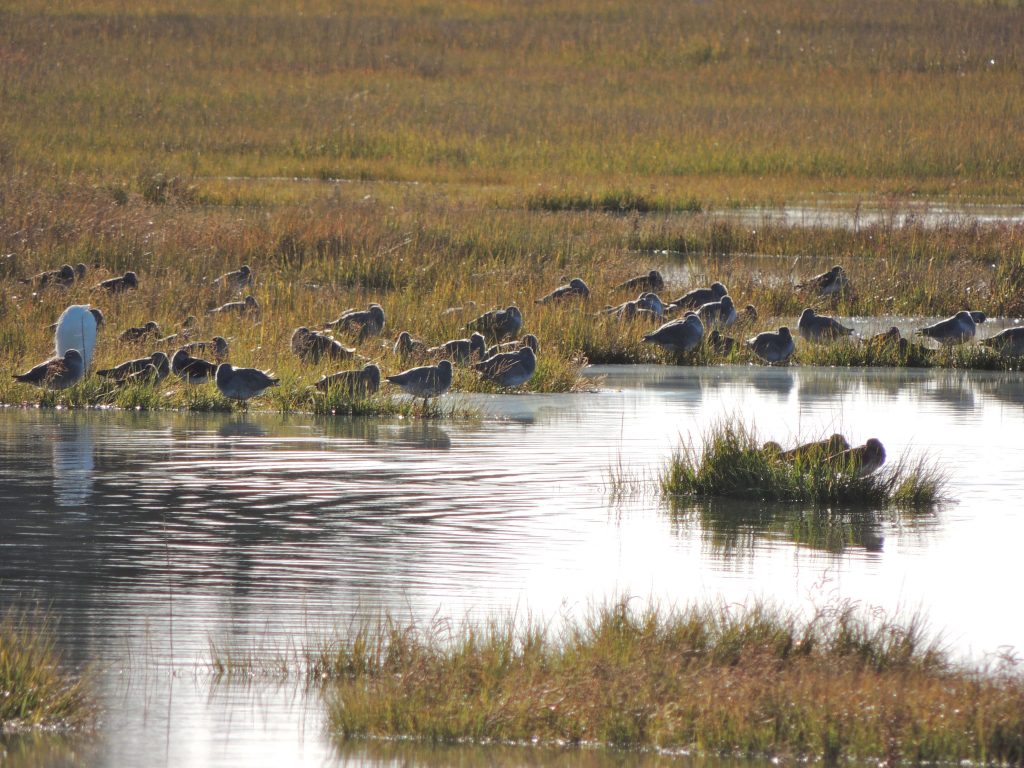November 6 2016. Cayuga ON. Every year about this time our local naturalists’ club undertakes a one-day bird count across the club’s defined study area, a territory lying within a 40 Km radius of an historic grand mansion in the City of Hamilton. Actually a goodly chunk of that range is open water of Lake Ontario – which presents its own opportunities and challenges. I’m sure if our moderator were to compile a map showing the precise areas actually birded by the dozens of active counters he would see an irregular and scattered patchwork. It might reasonably prompt the question of the value of a count with such erratic and incomplete coverage. The answer to which is that the goal of such a count is more about identifying long term indicators of species increases, decreases or other unusual changes than it is to attempt to know exactly how many birds exist today. Any data is more useful than none – and it’s good exercise too I suppose.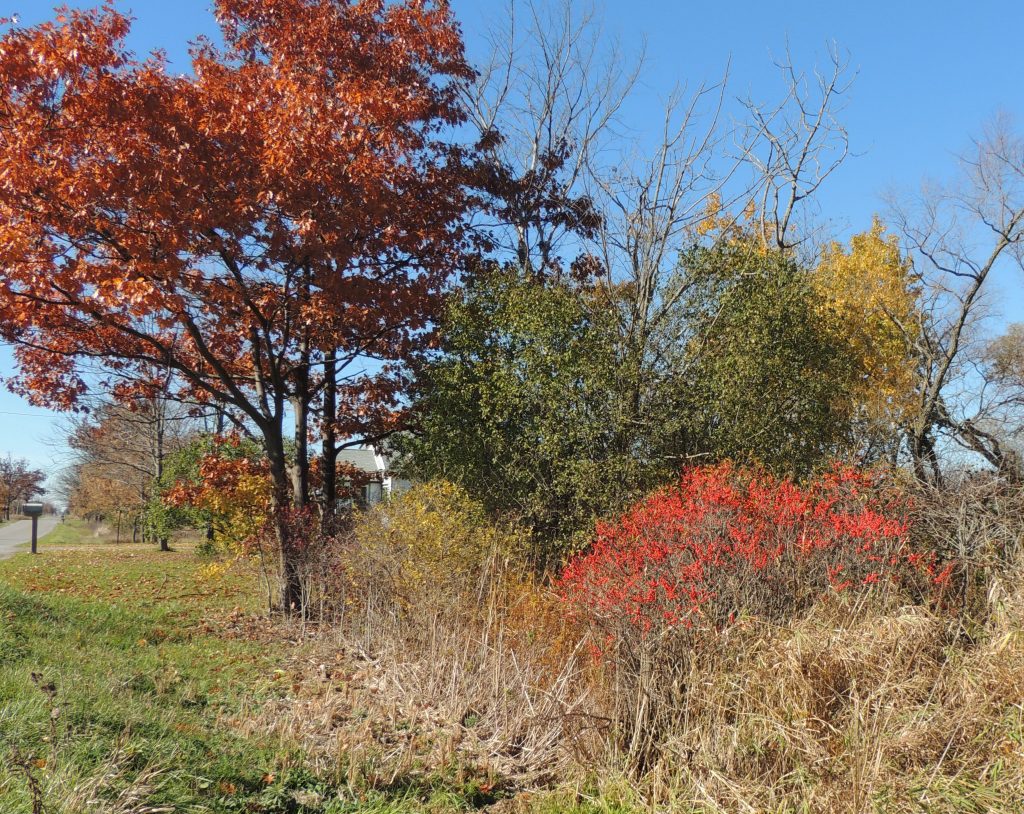
A new-to-birding companion and I spent four and a bit hours criss-crossing our chosen study area, a mix of farmland and thick deciduous forests. It was a bright, sunny and mild day, the predominantly oak forests were startlingly colourful and along some swampy edges were patches of Winterberry Holly carrying heavy loads of brilliantly scarlet berries.
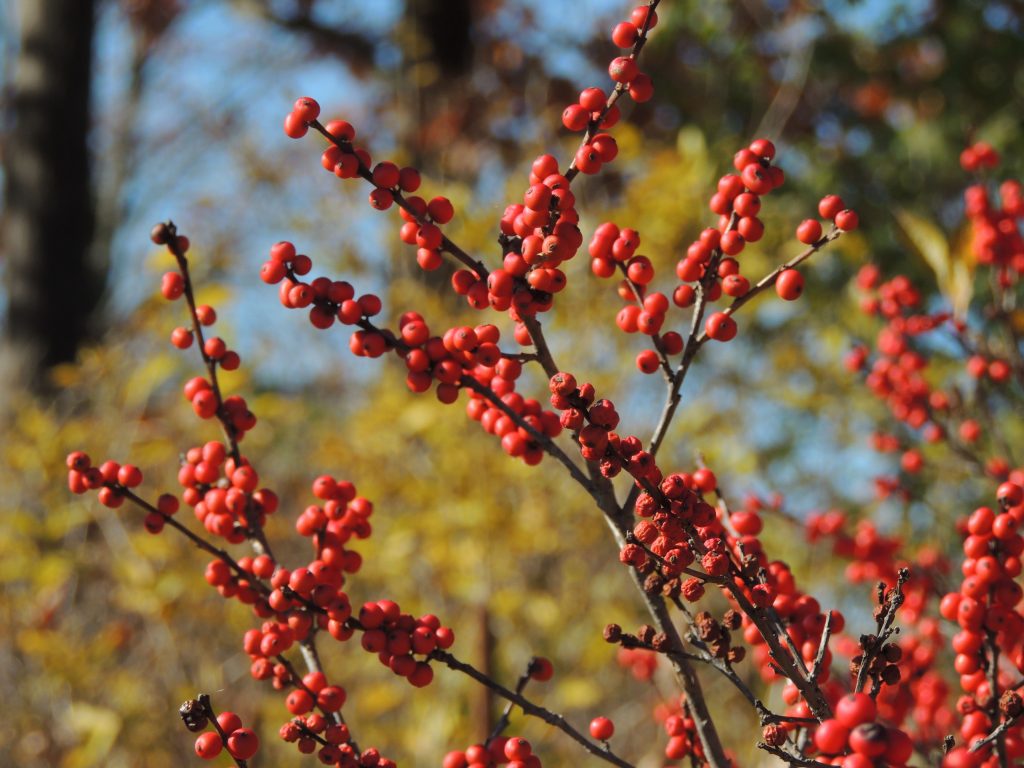
November birding is rarely stimulating but today we enjoyed two or three stops where the birding was really quite good. At one we scanned a line of fences and found several Eastern Bluebirds, an American Kestrel and a Northern Mockingbird – all good sightings even if they were rather distant. A little later, along a quiet gravel road flanked by oak forests, dozens of American Robins and Cedar Waxwings were filling up on holly berries while Dark-eyed Juncos and American Tree Sparrows found something indeterminate yet edible along the grassy roadside.
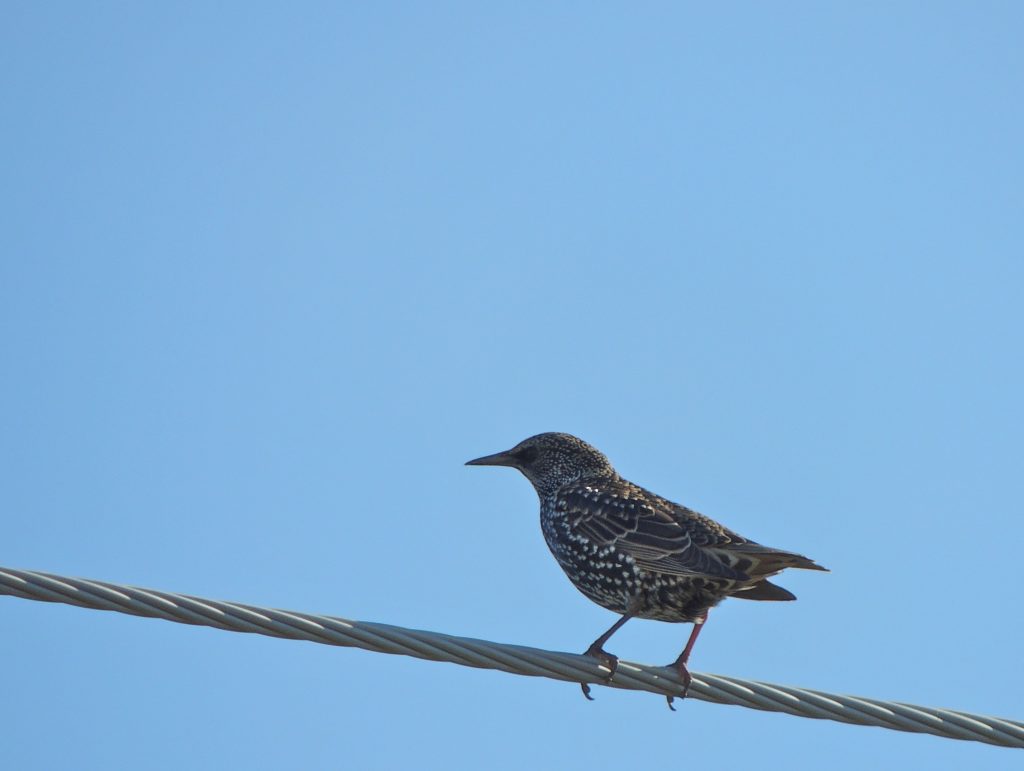
Birds of the Day were an enormous flock, or murmuration, of European Starlings, murmuration being the generally accepted collective noun for starlings and other chattering crowds; probably conferred upon them by Victorian lexicographers. They had gathered in the pastures around a radio transmission tower and every now and then a swirl of hundreds wheeled around choosing one minute to search for food in the short ragged grasses, the next to gather and chatter amongst themselves on the guy-wires of the radio mast.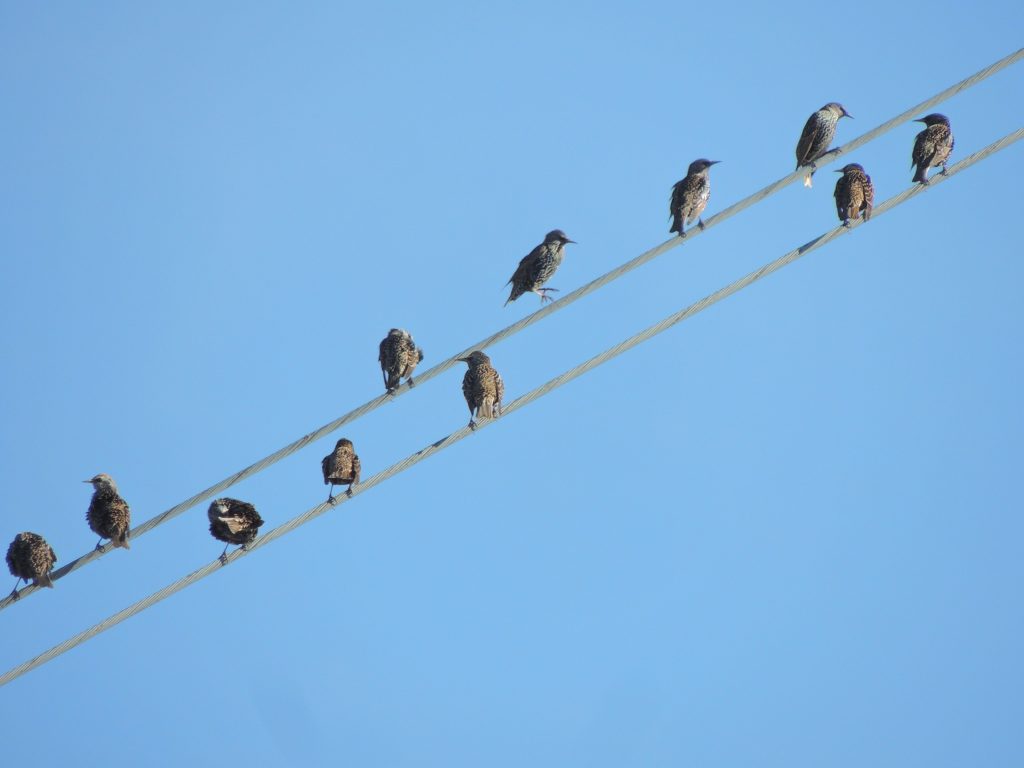
Apart from the sight of this large, perhaps five hundred strong, murmuration was the spectacular beauty of the individual birds. Not something you’d usually associate with starlings. But starlings have just finished a post-breeding moult to replace most body and flight feathers, and these new feathers come with pale tips. You’d hardly recognise the birds in these photos as the same rather dark and dowdy starling of urban living; but there they are, glorious for a while until the exigencies of their daily scramble for food, warmth and space gradually wears off those glorifying accents.

